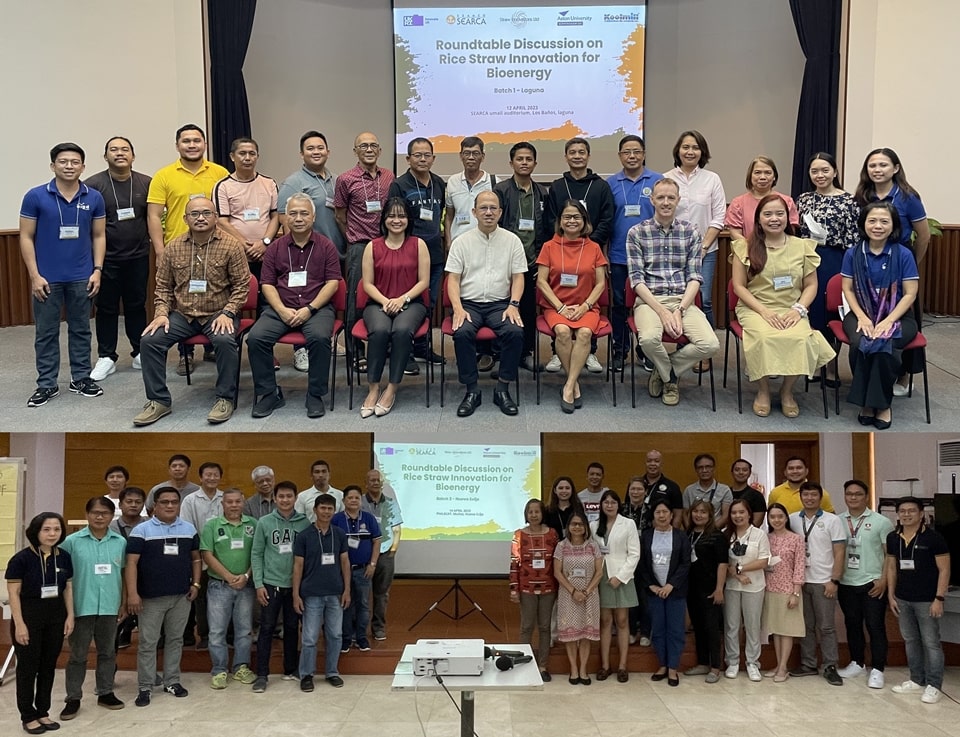 Participants and facilitators during the Roundtable discussion held in SEARCA Headquarters, Laguna last 12 April 2023 (top) and PhilSCAT, Nueva Ecija 13 April 2023 (bottom)
Participants and facilitators during the Roundtable discussion held in SEARCA Headquarters, Laguna last 12 April 2023 (top) and PhilSCAT, Nueva Ecija 13 April 2023 (bottom)
Rice farmers and municipal agricultural officers in Laguna and Nueva Ecija probed into the use of rice straw for bioenergy to stop the harmful effects of burning waste straw in the fields when they participated in a series of roundtable discussions (RTDs) facilitated by the Southeast Asian Regional Center for Graduate Study and Research in Agriculture (SEARCA).
The participants cited the negative effects of burning, such as air pollution, emission of greenhouse gases, health hazards, and motorist accidents. They emphasized the need to strengthen the use of rice straw for bioenergy, fertilizer, mulching, livestock feed, or mushroom substrate instead of disposing of it as waste.
These discussions were led by SEARCA’s Emerging Innovation for Growth Department as part of the Rice Straw Biogas Hub project funded by Innovate UK. They were conducted in Los Baños, Laguna on 12 April 2023 and in Muñoz, Nueva Ecija on 14 April 2023.
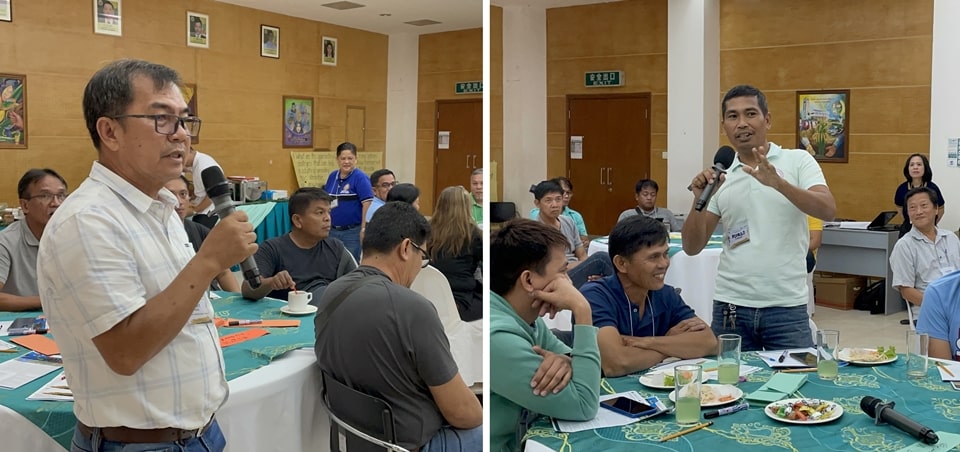 Both LGU officers (left) and Farmer representatives (right) are eagerly sharing their perceptions and experience on the rice straw innovations being implemented in their respective municipalities.
Both LGU officers (left) and Farmer representatives (right) are eagerly sharing their perceptions and experience on the rice straw innovations being implemented in their respective municipalities.
The RTDs aimed to identify challenges, opportunities, and innovations in implementing local and national policies on rice straw management. The discussions gathered participants, which included local government units, farmer associations, environmental groups, research organizations, and other rice commodity stakeholders from ten rice-producing municipalities in Laguna and Nueva Ecija.
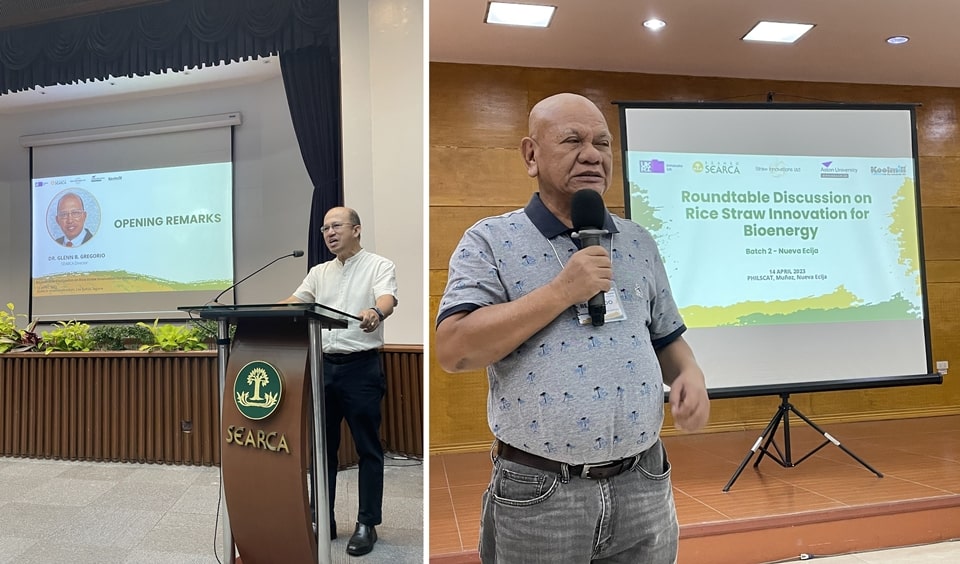 Dr. Glenn Gregorio, SEARCA Director (left photo), and Mr. Bernardo Valdez, Provincial Agriculture Officer of Nueva Ecija (right photo), delivered their opening message and welcoming remarks, encouraging the participants' active participation during the activity.
Dr. Glenn Gregorio, SEARCA Director (left photo), and Mr. Bernardo Valdez, Provincial Agriculture Officer of Nueva Ecija (right photo), delivered their opening message and welcoming remarks, encouraging the participants' active participation during the activity.
Dr. Glenn Gregorio, SEARCA director, remarked that attaining agricultural transformation through innovation takes an open mind and a brave change in policies, processes, and implementation. He explained that the RTD is designed to be a mutual learning experience of gaining insights from the attendees while sharing project innovations such as rice straw use for biogas generation.
Mr. Bernado Valdez, the provincial agriculture officer of Nueva Ecija, said it was important to be informed about value-adding initiatives related to rice production, a primary agricultural activity. He assured that his province is open to innovative technologies benefiting farmers.
Straw Innovations Ltd. CEO and founder Craig Jamieson gave an overview of his company and its central role in the Rice Straw Biogas Hub project. He said that his start-up company invested in green technologies to use a highly neglected resource, rice straw. He presented harvesting technology services that chop straw for various uses or remove straw from the fields for bioenergy use in rice drying, milling, and pelletizing as cooking fuel. He outlined the work packages of the Rice Straw Biogas Hub project, which are being implemented in collaboration with four organizations, namely: Rice Harvesting and Bioenergy Use for Rice Drying by Straw Innovations; Energy Efficient Milling by Koolmill; Socioeconomic Analysis by Aston University; and Greenhouse Gas Analysis and Enabling Environment by SEARCA.
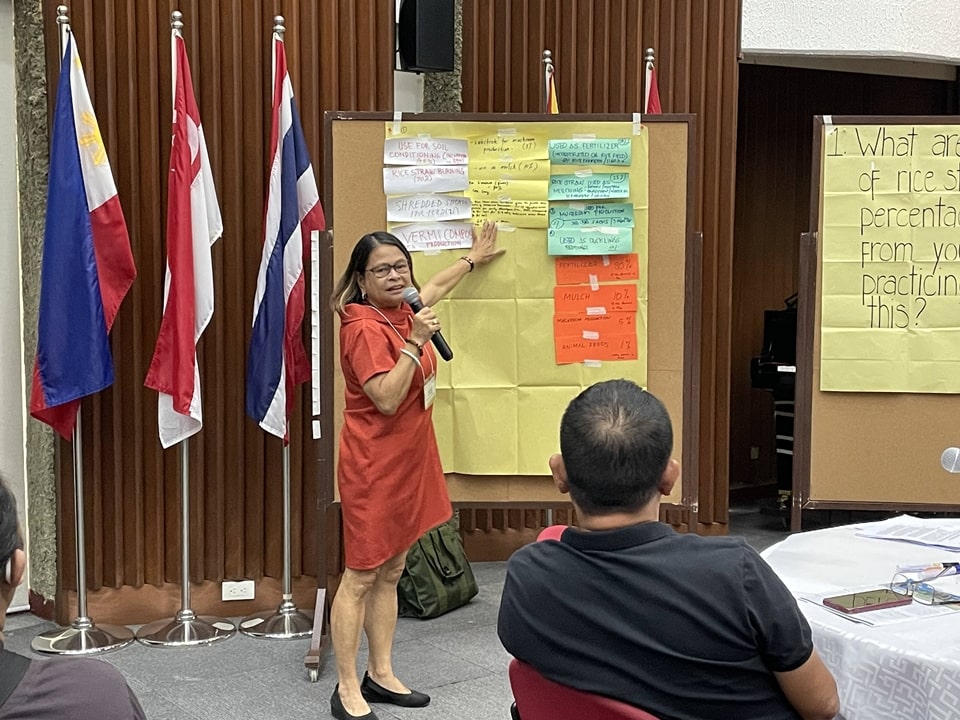
Dr. Ma. Victoria Espaldon, SEARCA consultant on policy and governance, moderated the discussions on the extent of current rice straw uses and disposal, the effects, and reasons for burning rice straw, as well as the local policies on rice straw management and bioenergy, including adoption strategies. Participants, randomly grouped into buzz teams, provided insights that were cross-examined by facilitators and other buzz teams. Findings highlighted a basic awareness of the negative effects of straw burning, a limited practice on alternative ways of disposal or use, and a demand on capacity building for straw management strategies and implementation of local policies.
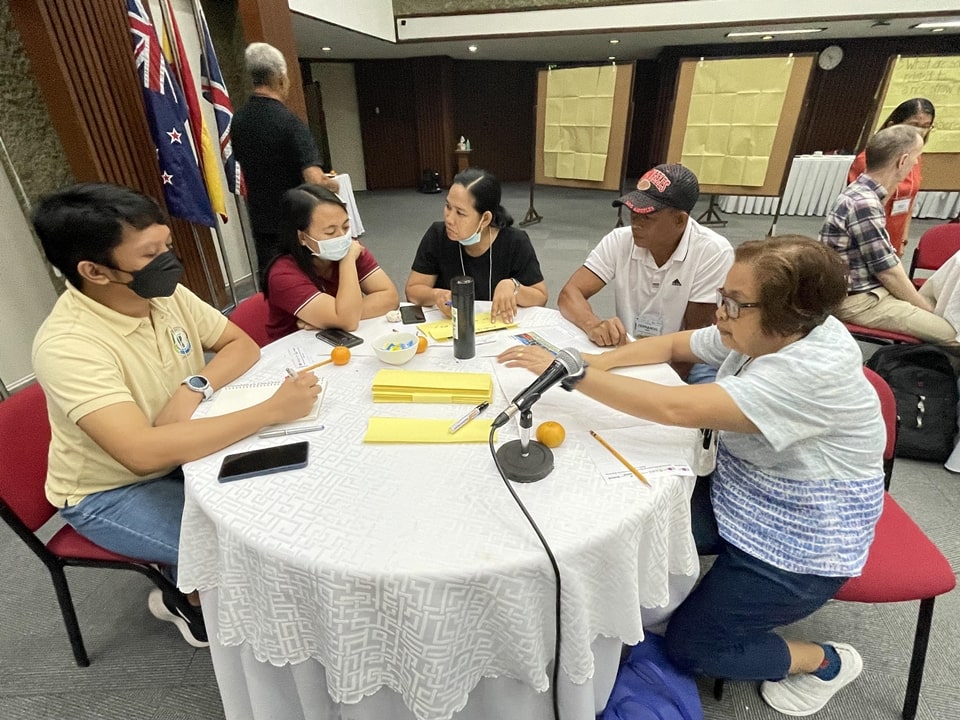
The RTDs also enabled stakeholders to assess service options offered by Straw Innovations for rice straw management. Dr. Jessica Villanueva-Peyraube, SEARCA socioeconomic consultant, introduced the Analytical Hierarchy Process (AHP) as a decision-making tool using economic, sociopolitical, and environmental criteria for gauging the given options. The assessment and preferences will be considered in developing a viable business model offering solutions fitted to the target provinces.
Dr. Victor Luis, project consultant, talked about anaerobic digestion as a means of producing biogas energy from various agricultural wastes, including rice straw. He presented the biogas production potential of different wastes and explained how the chemical composition of rice straw affects the potential. Dr. Luis discussed the benefits of biogas as an energy source and the opportunities to power rice production among other agricultural activities.
Concluding the rice straw management discussions, stakeholders expressed their training needs, lessons learned, and feedback. Among these was a demand for a demonstration of the harvesting technology by Straw Innovations. The overall results and findings from the discussions serve as baseline for crafting recommendations on the enabling environment of managing rice straw and its use for clean energy.
The RTD facilitating team from SEARCA included Ms. Lichelle Dara Carlos, program specialist; Dr. Romeo Labios, consultant; Ms. Darlyn Angeles, project coordinator; Mr. Jerrel Edric Mallari, project assistant; and Ms. Richelle Legaspi, research assistant.